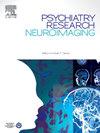How psychostimulant treatment changes the brain morphometry in adults with ADHD: sMRI Comparison study to medication-naïve adults with ADHD
IF 2.1
4区 医学
Q3 CLINICAL NEUROLOGY
引用次数: 0
Abstract
ADHD is increasingly recognised as a cause of functional impairment in adults. Treatment guidelines recommend stimulants as the first-line treatment for adult ADHD, but concerns exist about long-term efficacy and potential tolerance. We investigated the long-term effect of stimulant therapy on brain morphometry in individuals with ADHD.
We obtained structural MRI data from the UCLA Consortium for Neuropsychiatric Phenomics for 26 adults with ADHD. We compared grey matter volume, cortical thickness, sulcal depth, gyrification index, and fractal dimension between individuals with ADHD who had received psychostimulant treatment and medication naïve. For clinical assessment, we also compared Barratt's impulsivity score, Dickman impulsivity inventory II, and Eysenck's impulsivity inventory and investigated how brain morphometry were associated with these scores
The treated group exhibited significantly higher values in surface-based metrics (FWE-corrected p-value < 0.05), including gyrification index, sulcal depth, and fractal dimension. There was an increased gyrification observed in the right Rolandic operculum, left supplementary motor area, left superior temporal gyrus, right fusiform gyrus, and left cuneus. Increased sulcal depth was detected in the inferior and superior orbitofrontal regions, while increased fractal dimension was also evident in the left superior orbitofrontal gyrus. Treated group venturesomeness scores positively correlated with the grey matter volume of the right anterior cingulate gyrus and negatively with the right superior occipital gyrus.
Our results suggest a limited treatment effect on ADHD scores and grey matter volume in adults. Despite significant surface-based metrics, these changes were not accompanied by improvements in the clinical scores.
精神兴奋剂治疗如何改变成人多动症患者的大脑形态:sMRI 与药物治疗无效的成人多动症患者对比研究
注意力缺陷多动障碍越来越被认为是成年人功能障碍的一个原因。治疗指南推荐兴奋剂作为成人多动症的一线治疗,但存在长期疗效和潜在耐受性方面的担忧。我们研究了兴奋剂治疗对ADHD患者脑形态测量学的长期影响。我们从加州大学洛杉矶分校神经精神表型学联盟获得了26名ADHD成人的结构MRI数据。我们比较了接受精神兴奋剂治疗和药物治疗naïve的ADHD患者的灰质体积、皮质厚度、脑沟深度、回转指数和分形维数。为了进行临床评估,我们还比较了Barratt的冲动性评分、Dickman冲动性量表II和Eysenck的冲动性量表,并研究了脑形态测量学与这些评分的关系。治疗组在基于表面的指标(fwe校正的p值<;0.05),包括旋化指数、沟深、分形维数。右侧罗兰底盖、左侧辅助运动区、左侧颞上回、右侧梭状回、左侧楔叶等部位均出现旋回增加。眶额上下回沟深增加,左侧眶额上回分形维数增加。治疗组冒险性评分与右侧扣带前回灰质体积呈正相关,与右侧枕上回灰质体积负相关。我们的研究结果表明,对成人ADHD评分和灰质体积的治疗效果有限。尽管有显著的基于表面的指标,但这些变化并没有伴随着临床评分的改善。
本文章由计算机程序翻译,如有差异,请以英文原文为准。
求助全文
约1分钟内获得全文
求助全文
来源期刊
CiteScore
3.80
自引率
0.00%
发文量
86
审稿时长
22.5 weeks
期刊介绍:
The Neuroimaging section of Psychiatry Research publishes manuscripts on positron emission tomography, magnetic resonance imaging, computerized electroencephalographic topography, regional cerebral blood flow, computed tomography, magnetoencephalography, autoradiography, post-mortem regional analyses, and other imaging techniques. Reports concerning results in psychiatric disorders, dementias, and the effects of behaviorial tasks and pharmacological treatments are featured. We also invite manuscripts on the methods of obtaining images and computer processing of the images themselves. Selected case reports are also published.

 求助内容:
求助内容: 应助结果提醒方式:
应助结果提醒方式:


